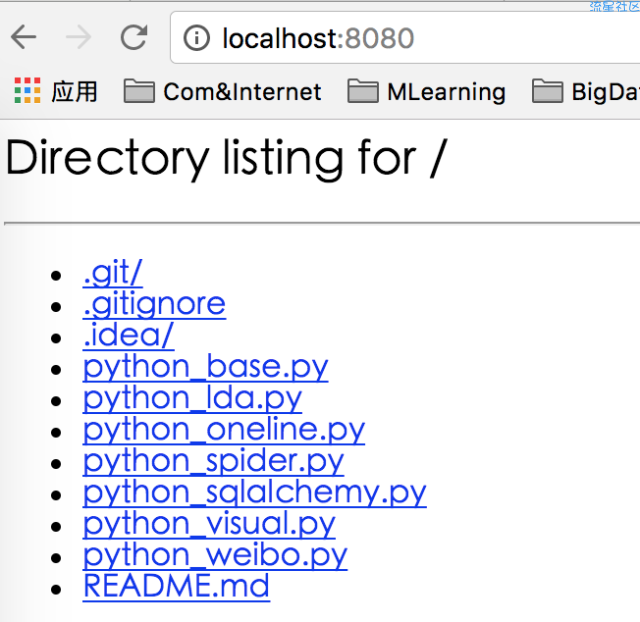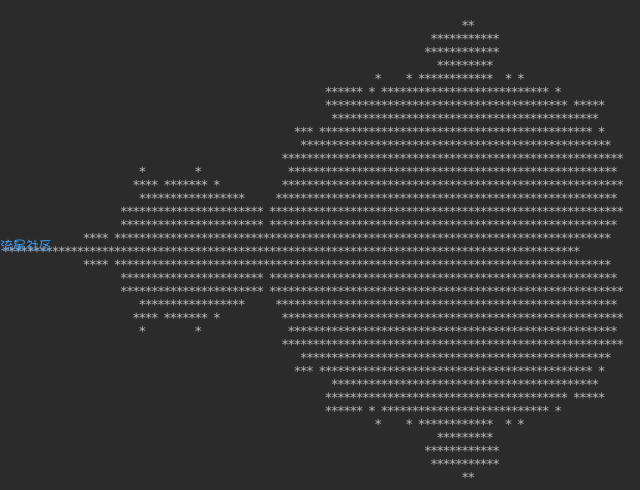首先你要了解一下Python之禅,一行代码输出“The Zen of Python”:
python -c "import this" """ The Zen of Python, by Tim Peters Beautiful is better than ugly. Explicit is better than implicit. Simple is better than complex. Complex is better than complicated. Flat is better than nested. Sparse is better than dense. Readability counts. Special cases aren't special enough to break the rules. Although practicality beats purity. Errors should never pass silently. Unless explicitly silenced. In the face of ambiguity, refuse the temptation to guess. There should be one-- and preferably only one --obvious way to do it. Although that way may not be obvious at first unless you're Dutch. Now is better than never. Although never is often better than *right* now. If the implementation is hard to explain, it's a bad idea. If the implementation is easy to explain, it may be a good idea. Namespaces are one honking great idea -- let's do more of those! """
从“The Zen of Python”也能看出,Python倡导Beautiful、Explicit、Simple等原则,当然我们接下来要介绍的一行Python能实现哪些好玩的功能,可能和Explicit原则相违背。
声明:这些小例子都来源于网络(最后给出参考网址),自己抱着学习的态度整理得到(除了FizzBuzz问题,有一次面试被问到了,自己写的)。如果侵犯了作者权益,私信我我会删除掉。按照惯例,先贴代码地址:
如果你有其他这方面的小例子,也欢迎评论,我会加到文章中,文章也许会长期更新。
(1)一行代码启动一个WEB服务【图1】
python -m SimpleHTTPServer 8080 # python2
python3 -m http.server 8080 # python3
(2)一行代码实现变量值互换
a, b = 1, 2; a, b = b, a
(3)一行代码解决FIZZBUZZ问题:
FizzBuzz问题:打印数字1到100, 3的倍数打印“Fizz”, 5的倍数打印“Buzz”, 既是3又是5的倍数的打印“FizzBuzz”
print(' '.join(["fizz"[x % 3 * 4:]+"buzz"[x % 5 * 4:] or str(x) for x in range(1, 101)]))
(4)一行代码输出特定字符"LOVE"拼成的心形
【图2】
print('\n'.join([''.join([('Love'[(x-y) % len('Love')] if ((x*0.05)**2+(y*0.1)**2-1)**3-(x*0.05)**2*(y*0.1)**3 = 0 else ' ') for x in range(-30, 30)]) for y in range(30, -30, -1)]))


python -c "import this" """ The Zen of Python, by Tim Peters Beautiful is better than ugly. Explicit is better than implicit. Simple is better than complex. Complex is better than complicated. Flat is better than nested. Sparse is better than dense. Readability counts. Special cases aren't special enough to break the rules. Although practicality beats purity. Errors should never pass silently. Unless explicitly silenced. In the face of ambiguity, refuse the temptation to guess. There should be one-- and preferably only one --obvious way to do it. Although that way may not be obvious at first unless you're Dutch. Now is better than never. Although never is often better than *right* now. If the implementation is hard to explain, it's a bad idea. If the implementation is easy to explain, it may be a good idea. Namespaces are one honking great idea -- let's do more of those! """
从“The Zen of Python”也能看出,Python倡导Beautiful、Explicit、Simple等原则,当然我们接下来要介绍的一行Python能实现哪些好玩的功能,可能和Explicit原则相违背。
声明:这些小例子都来源于网络(最后给出参考网址),自己抱着学习的态度整理得到(除了FizzBuzz问题,有一次面试被问到了,自己写的)。如果侵犯了作者权益,私信我我会删除掉。按照惯例,先贴代码地址:
此处内容已被隐藏,请评论后查看!
如果你有其他这方面的小例子,也欢迎评论,我会加到文章中,文章也许会长期更新。
(1)一行代码启动一个WEB服务【图1】
python -m SimpleHTTPServer 8080 # python2
python3 -m http.server 8080 # python3
(2)一行代码实现变量值互换
a, b = 1, 2; a, b = b, a
(3)一行代码解决FIZZBUZZ问题:
FizzBuzz问题:打印数字1到100, 3的倍数打印“Fizz”, 5的倍数打印“Buzz”, 既是3又是5的倍数的打印“FizzBuzz”
print(' '.join(["fizz"[x % 3 * 4:]+"buzz"[x % 5 * 4:] or str(x) for x in range(1, 101)]))
(4)一行代码输出特定字符"LOVE"拼成的心形
【图2】
print('\n'.join([''.join([('Love'[(x-y) % len('Love')] if ((x*0.05)**2+(y*0.1)**2-1)**3-(x*0.05)**2*(y*0.1)**3 = 0 else ' ') for x in range(-30, 30)]) for y in range(30, -30, -1)]))



3条回复 |
最后回复于2020-5-6

(5)一行代码输出MANDELBROT图像
Mandelbrot图像:图像中的每个位置都对应于公式N=x+y*i中的一个复数
print('
'.join([''.join(['*'if abs((lambda a: lambda z, c, n: a(a, z, c, n))(lambda s, z, c, n: z if n == 0 else s(s, z*z+c, c, n-1))(0, 0.02*x+0.05j*y, 40)) 2 else ' ' for x in range(-80, 20)]) for y in range(-20, 20)]))
Mandelbrot图像:图像中的每个位置都对应于公式N=x+y*i中的一个复数
print('
'.join([''.join(['*'if abs((lambda a: lambda z, c, n: a(a, z, c, n))(lambda s, z, c, n: z if n == 0 else s(s, z*z+c, c, n-1))(0, 0.02*x+0.05j*y, 40)) 2 else ' ' for x in range(-80, 20)]) for y in range(-20, 20)]))

回复列表
-

内容加载中...
说点什么...
 返回首页
返回首页
 编程源码
编程源码


